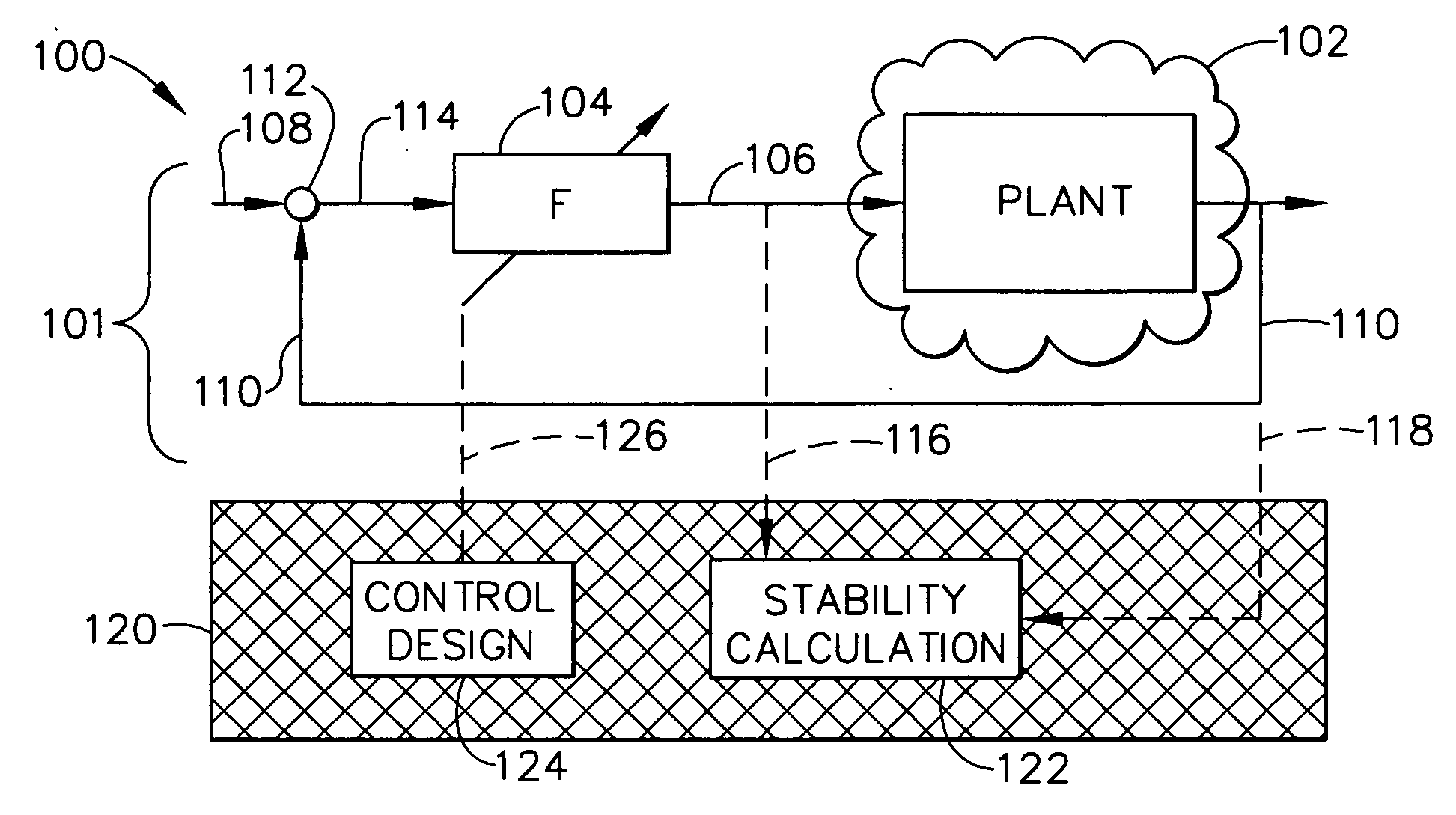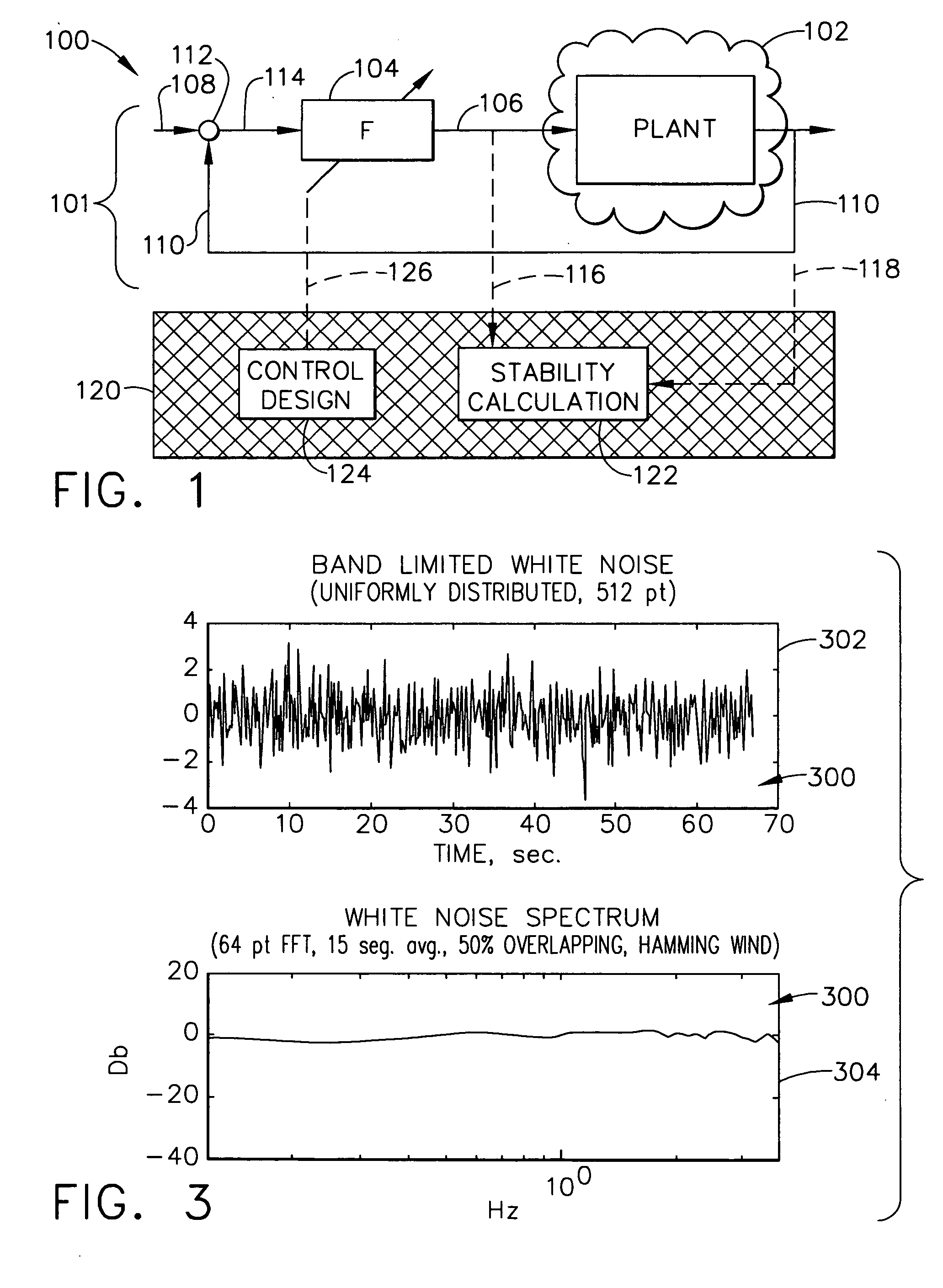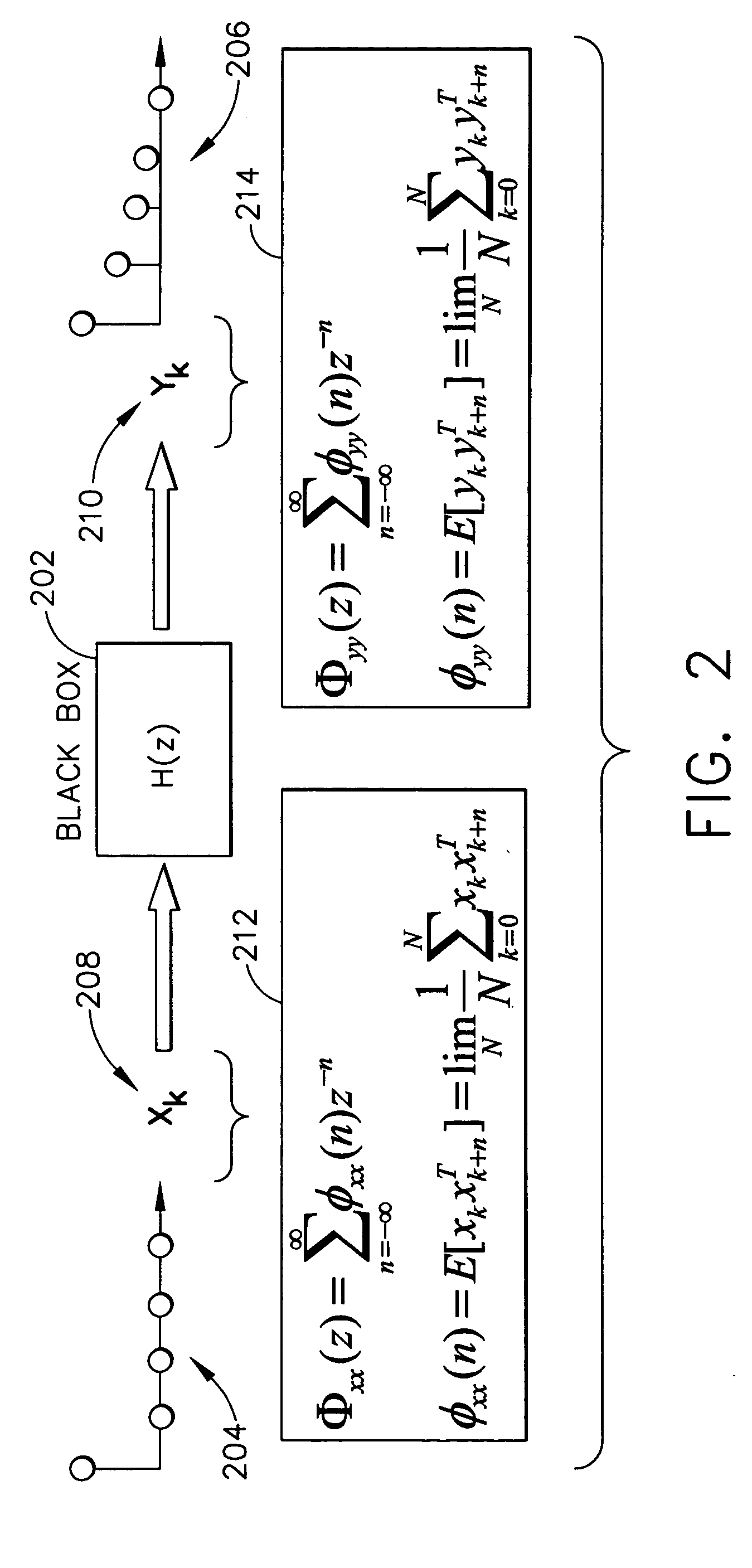In-flight control system stability margin assessment
a control system and stability margin technology, applied in the direction of vehicle position/course/altitude control, process and machine control, instruments, etc., can solve the problems of unnecessarily sensitive system, unnecessary waste of cost and manpower to develop the control system, and lack of rigorous theoretical underpinning
- Summary
- Abstract
- Description
- Claims
- Application Information
AI Technical Summary
Benefits of technology
Problems solved by technology
Method used
Image
Examples
example
[0052] Referring now to FIGS. 6 and 7, IFSMA may be illustrated using an example of an analytical physical plant model. The approach of the illustrative example is to identify the sensitivity function S using the white noise excitation signals, compute the spectrum estimate of S and compare the spectrum estimate of S 720 to the system sensitivity function S 710 of the analytical model in the frequency domain.
[0053] A SIMULINK™ block diagram for system model 601, shown in FIG. 6, models a system with nominal control laws and plant dynamics. Thus, an analytical model can be used to provide the “exact” system sensitivity function S 710 shown in FIG. 7 of the analytical model of system model 601. The modeled system may be similar to an actual system such as system 101 shown in FIG. 1. Thus, system model 601 includes a controller 604, model of physical plant 602, reference signal 608, feedback signal 610, comparator 612, comparison signal 614, and control signals 606 modeling correspond...
PUM
 Login to View More
Login to View More Abstract
Description
Claims
Application Information
 Login to View More
Login to View More - R&D
- Intellectual Property
- Life Sciences
- Materials
- Tech Scout
- Unparalleled Data Quality
- Higher Quality Content
- 60% Fewer Hallucinations
Browse by: Latest US Patents, China's latest patents, Technical Efficacy Thesaurus, Application Domain, Technology Topic, Popular Technical Reports.
© 2025 PatSnap. All rights reserved.Legal|Privacy policy|Modern Slavery Act Transparency Statement|Sitemap|About US| Contact US: help@patsnap.com



